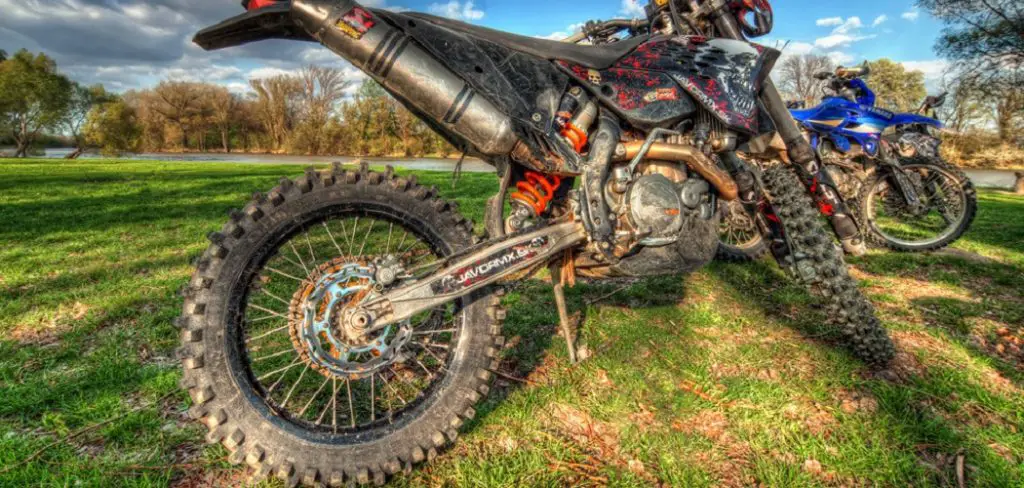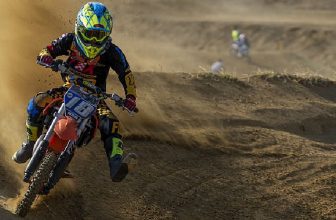How to Downshift on a Dirt Bike
Downshifting is an important mechanic that you’ll need to master if you’re going to be riding a dirt bike. The process of downshifting is the opposite of shifting up in a bike, and it’s crucial for controlling your speed on the trail or track.

With a little patience, you’ll learn how to downshift on a dirt bike. It takes some practice to get the hang of it, but with these tools at your disposal and some time spent practicing in a controlled environment, you’ll be able to do it like a pro! Let’s take a look at how to downshift on a dirt bike properly so that you can safely navigate any course!
Required Tools
- A Dirt bike
- A flat, open space
- Helmet; protective gear (knee pads, elbow pads, gloves)
- Safety cones
Instructions: How to Downshift on a Dirt Bike
Step One: Keep Speed in Mind
The first thing you need to do is be able to keep your speeds under control and remember the importance of slowing before entering a turn so as not to hit the dirt on the inside edge. To help with this, downshift as soon as possible after coming out of a straightaway or corner, but always allow some room for the bike to brake.
Step Two: Get a Feel for Your Shifts
It’s always a good idea to practice shifting gears on pavement first so that when it comes time to ride through some mud and muck, you’ll be more comfortable with what gear you’re in. Practice makes perfect, so get to it!
Step Three: Get a Feel for Your Bike
The dirt biker needs to know what gear the engine is in at all times and be able to shift accordingly whenever necessary (without overdoing it). Don’t forget you’ll have more shocks on rough terrain than when riding on pavement, and that’s just one more factor to think about when downshifting.
Step Four: Downshift Before the Turn
You can’t always anticipate what’s ahead of you, but it never hurts to be prepared for sudden turns or rough terrain. If you’re headed into a corner and know that there is going to be some bumpy land on the other side, you’re better off downshifting before the turn.

Step Five: Don’t Over-shift!
Once you know what your bike can handle, it’s important to not overdo it when shifting gears. You’ll be much more comfortable with a few fewer shifts than too many; even if they are only slightly different speeds.
Step Six: Shift Smoothly!
For the most part, you’ll want to shift gears as slowly and smoothly as possible. You don’t have to be gentle with your shifts; just know when it’s time for them. Don’t try to force a gear if you’re struggling or feel like it doesn’t fit into a certain spot.
Some Tips & Advice on Downshifting
- If you’re into a corner and know that there is going to be some bumpy land on the other side, you’re better off downshifting before the turn.
- Once you know what your bike can handle, it’s important not to overdo it when shifting gears. You’ll be much more comfortable with a few fewer shifts than too many; even if they are only slightly different speeds.
- Shift smoothly! For the most part, you’ll want to shift gears as slowly and smoothly as possible. You don’t have to be gentle with your shifts; just know when it’s time for them. Don’t try to force a gear if you’re struggling or feel like it doesn’t fit into a certain spot.
- When you’re going over bumps or rough terrain, downshift to prevent your bike from jumping out of gear and crunching the gears together when they are in contact with one another. You’ll want to avoid sudden movements in general on offroad riding, but upshifting is also important if you want to go faster.
- When you’re coming down a hill, always try to keep your bike in low gear so that it doesn’t start running away from you. You’ll have more control at the bottom of the hill and will be able to slow yourself down much quicker if need be.
- Downshifting will help with bumps and rough terrain because when riding on these types of terrains, there are more chances for things like jumps or sudden movements. If you’re going up a hill, always keep your bike in high gear.
Frequently Asked Question
Why Would You Want to Downshift?
It’s useful for when your bike is at its maximum power or if it can’t handle the terrain in front of you. If you’re headed into a corner and know that there is going to be some bumpy land on the other side, you’ll want to downshift so that you can have some momentum for the bump.

How Do I Know When It’s Time to Downshift?
You’ll be able to tell by listening closely or watching your gear indicator. If there’s a big change in terrain, such as going from flat land into a steep ascent up an incline, it may be the right time to downshift.
How Do I Know What Gear Is the Right One?
It’s natural to get really focused on going fast and shifting gears, but if you’re not paying attention or don’t have a good idea of where your bike should go, then you’ll find yourself feeling stuck in between gears. This can be really frustrating if you’re trying to make a quick move because the bike will either jerk forward or refuse to go at all.
Conclusion
The key to downshifting is timing. You want your lever pulled back before you go into the corner and then let it out at a steady pace as you exit the turn and begin accelerating again.
It takes practice but once mastered, this skill will help you ride faster with less effort on long trails or technical downhill courses with hairpin turns that require frequent braking and shifting. I hope this has been a helpful guide for how to downshift on a dirt bike. If you have any questions, please feel free to reach out!
Check It Out to learn to Make Your Dirt Bike Faster.






